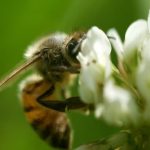Are you looking to create a beautiful garden without spending hours tending to it every day? In this article, we will explore low maintenance gardens ideas for busy individuals and those with limited gardening experience. Low maintenance gardens are perfect for those who want to enjoy a lush outdoor space without the constant upkeep.
For busy individuals, having a low maintenance garden means less time spent on chores and more time relaxing in the greenery. These gardens are also ideal for those with limited gardening experience as they require minimal care and attention. By choosing the right plants and designing your garden strategically, you can create a stunning outdoor space that thrives with little effort.
With tips on selecting the right plants for different climates and soil conditions, designing a functional layout, efficient watering techniques, mulching strategies, and advice on essential tools and equipment, maintaining a low maintenance garden has never been easier. Whether you opt for traditional gardening or container gardening, we’ll provide you with all the information you need to create a beautiful yet low-maintenance outdoor oasis.
Choosing the Right Plants
When it comes to creating a low maintenance garden, selecting the right plants is key. Choosing plants that are well-suited to your specific climate and soil conditions can significantly reduce the amount of time and effort required for upkeep. Here are some tips on selecting low-maintenance plants that thrive in different environments:
Climate Considerations
Before choosing plants for your low maintenance garden, consider the climate in which you live. Opt for native plants or those that are well-adapted to your region’s typical weather patterns. Native plants are often more resilient and require less water and maintenance compared to exotic species. Additionally, consider investing in drought-tolerant plants if you live in an area prone to dry spells.
Soil Conditions
In addition to climate considerations, it’s essential to assess the soil conditions in your garden before selecting plants. Some plants thrive in sandy soils, while others prefer clay or loamy soil. Conduct a soil test to determine the pH levels and nutrient content of your soil, then choose plants that are suitable for those conditions. Selecting plants that are well-suited to your soil type will help them thrive with minimal intervention.
Low-Maintenance Plant Options
There is a wide variety of low-maintenance plant options available for different climates and soil conditions. Some popular choices include succulents, ornamental grasses, perennial flowers like lavender or coneflowers, shrubs such as boxwood or yew, and groundcovers like creeping thyme or sedum. These plants require minimal watering, pruning, and fertilizing once established, making them ideal for busy individuals or beginners in gardening.
By carefully considering the climate, soil conditions, and plant options for your low maintenance garden, you can create a beautiful and thriving outdoor space with minimal effort. Whether you live in a hot and dry environment or a cooler region with heavy clay soil, there are low-maintenance plant options available to suit your needs. With the right plant selection, you can enjoy a vibrant garden without spending countless hours on upkeep.
Designing Your Garden
When designing a low maintenance garden, it is essential to consider both functionality and aesthetics. One of the key ideas for creating a functional layout is to group plants with similar water and sunlight requirements together. This not only makes it easier to care for your garden but also ensures that each plant receives the necessary conditions to thrive. Additionally, incorporating pathways or stepping stones can help define different areas of your garden while providing easy access for maintenance tasks.
Utilizing Raised Beds and Containers
Another fantastic idea for designing a low maintenance garden is to utilize raised beds and containers. Raised beds elevate the planting area, making it more accessible for tending to plants without having to bend or kneel as much. Containers are also a great option, as they can be easily moved around to optimize sunlight exposure or protect delicate plants from harsh weather conditions. Both raised beds and containers can help reduce the amount of weeding required in your garden.
Incorporating Hardscaping Elements
Incorporating hardscaping elements into your garden design is another strategy for creating a visually appealing layout that requires minimal upkeep. Adding features such as gravel paths, stone walls, or decorative rocks not only add interest to your garden but also reduce the need for watering and weeding in those areas. Hardscaping elements can also create defined borders between different plantings, giving your low maintenance garden a polished look while cutting down on maintenance tasks.
By combining these ideas for designing your low maintenance garden, you can create a space that is not only easy to care for but also beautiful to look at. Whether you choose to group plants strategically, utilize raised beds and containers, or incorporate hardscaping elements, planning ahead will save you time and effort in the long run. With these design ideas in mind, you can enjoy a thriving garden without spending hours on maintenance tasks.
Watering Techniques
Watering your plants efficiently is key to maintaining a successful low maintenance garden. By utilizing smart watering techniques, you can ensure that your plants receive the necessary hydration without requiring excessive time and effort on your part. Here are some helpful ideas to keep your garden thriving with minimal watering:
- Installing a drip irrigation system: This system delivers water directly to the roots of each plant, minimizing waste and ensuring efficient hydration.
- Using a soaker hose: Similar to a drip irrigation system, a soaker hose allows water to seep slowly into the soil, promoting deep root growth and reducing evaporation.
- Watering in the morning or evening: To prevent water loss due to evaporation, it is best to water your plants during the cooler parts of the day. This also helps avoid scorching leaves from sun exposure.
In addition to these watering techniques, choosing drought-tolerant plants can significantly reduce the need for frequent watering in your low maintenance garden. Succulents, lavender, and yarrow are just a few examples of plants that can thrive with minimal moisture. By selecting plants that are well-suited to your climate and soil conditions, you can create a beautiful garden that requires minimal effort to maintain.
Proper mulching is another effective way to conserve moisture in the soil and reduce the frequency of watering in your garden. Organic mulches such as wood chips or shredded leaves help retain moisture, suppress weed growth, and improve soil health.
By applying a layer of mulch around your plants, you can minimize water evaporation and protect their roots from extreme temperatures. Incorporating mulching into your gardening routine is a simple yet valuable practice for achieving a low maintenance garden that thrives with less water consumption.
Mulching and Weeding
In addition to weed prevention, mulch plays a crucial role in maintaining healthy soil in your low maintenance garden. As organic mulch breaks down over time, it enriches the soil with essential nutrients and improves its structure, promoting better drainage and aeration.
This natural process encourages beneficial microorganisms to thrive in the soil, creating a more conducive environment for plant growth. With proper mulching techniques and regular application of mulch throughout the gardening season, you can significantly reduce the need for fertilizers and chemical additives while keeping your garden flourishing with minimal effort.
When it comes to weeding in a low maintenance garden, strategic planning and effective management are key. By incorporating mulching as part of your garden design strategy, you can create an additional layer of defense against weeds while simultaneously nourishing your plants’ root systems.
Mulch acts as a protective barrier that inhibits weed seed germination and root penetration into the soil. Combined with proper spacing between plants and regular inspections to remove any emerging weeds promptly, you can keep your garden looking tidy and healthy without dedicating excessive time and energy to manual weeding.
| Mulching Benefits | Weed Prevention |
|---|---|
| Retains moisture in the soil | Deprives weeds of sunlight |
| Enriches soil with nutrients | Reduces need for frequent weeding |
| Promotes beneficial microorganisms | Inhibits weed seed germination |
Gardening Tools and Equipment
Maintaining a low maintenance garden requires having the right tools and equipment on hand to ensure efficiency and ease. By investing in quality items that are specifically designed for garden care, you can save time and effort while keeping your outdoor space looking lovely. Here are some essential tools and equipment recommendations for your low maintenance garden:
- Pruning shears: Sharp, high-quality pruning shears are essential for trimming back overgrown plants and removing dead or damaged branches.
- Garden hose or watering can: A good watering system is crucial for keeping your plants hydrated, whether it’s a reliable hose with adjustable settings or a well-designed watering can.
- Weeder tool: To minimize the need for constant weeding, invest in a sturdy weeder tool that can easily remove unwanted plants from your garden beds.
- Garden gloves: Protect your hands while working in the garden with a comfortable pair of durable gloves that provide grip and flexibility.
- Wheelbarrow or garden cart: Easily transport heavy items such as soil, mulch, and plants around your garden with a wheelbarrow or garden cart that saves you time and energy.
Having these basic tools at your disposal will make routine maintenance tasks like pruning, watering, weeding, and transporting materials much more manageable. Additionally, consider investing in specialized equipment such as soaker hoses for efficient irrigation, ergonomic gardening stools for comfortable planting sessions, and lightweight yet sturdy rakes for easy cleanup.
Whether you’re a beginner gardener looking to start small or an experienced green thumb seeking to streamline your garden care routine, having the right tools can make all the difference in creating a successful low maintenance garden. Take the time to assess your needs and invest in quality equipment that aligns with your gardening goals to ensure a stress-free and enjoyable outdoor experience.
Container Gardening
When choosing plants for container gardening in a low maintenance garden, opt for varieties that are well-suited for the size of the containers and the available sunlight. Consider using self-watering containers or adding mulch on top of the soil to help retain moisture and reduce the frequency of watering.
Some easy-to-care-for plants that thrive in containers include herbs like rosemary and basil, succulents such as aloe vera and echeveria, as well as flowering perennials like coneflowers and daylilies.
To enhance the visual appeal of your container garden, mix different plant textures, colors, and heights within each container while ensuring they have similar light and water requirements. Additionally, consider incorporating trailing plants like ivy or petunias to add cascading elements to your arrangements. With the right plant selection and design strategies in place, container gardening can be an enjoyable and low-maintenance way to bring nature into your living space.
| Low Maintenance Plants | Recommended Container Size |
|---|---|
| Rosemary | 12-inch pot |
| Succulents (echeveria) | 6-inch pot |
| Coneflowers | 14-inch pot |
Seasonal Maintenance Tips
Creating a low maintenance garden can be a game-changer for busy individuals or those with limited gardening experience. By following the right strategies and tips, you can enjoy a beautiful outdoor space without the constant need for upkeep and maintenance. When it comes to seasonal maintenance, there are several key tasks that can help ensure the long-term success of your low maintenance garden.
During the spring, focus on cleaning up debris, pruning any overgrown plants, and refreshing mulch to help suppress weeds and retain moisture in the soil. As summer arrives, make sure to water your plants deeply but infrequently to encourage deep root growth and resilience during hot weather. Regular deadheading of flowers and regular inspections for pests can also help keep your garden healthy and thriving throughout the summer months.
When fall approaches, take some time to divide any overcrowded perennials, plant bulbs for next spring’s blooms, and add a layer of mulch to protect your plants during the winter months. In winter, you can still enjoy your low maintenance garden by planning and dreaming about next year’s changes or additions.
By staying on top of these seasonal maintenance tasks, you can ensure that your low maintenance garden remains a source of beauty and relaxation throughout the year. With these tips in mind, creating and maintaining a low maintenance garden is not only achievable but also highly rewarding in the long run.
Frequently Asked Questions
What Is the Easiest Garden to Maintain?
The easiest garden to maintain is a native plant garden. Native plants are well-suited to the local climate and soil conditions, requiring minimal watering, fertilizing, and pest control. They thrive with little intervention, making them perfect for low-maintenance gardening.
What Is the Most Low Maintenance Landscaping?
When it comes to low maintenance landscaping, xeriscaping is often considered the most hassle-free option. Xeriscaping involves using drought-tolerant plants, rocks, and mulch to create a landscape that requires minimal water and upkeep. With proper planning, xeriscapes can look beautiful while saving time and resources.
What Is the Best Low Maintenance Ground Cover?
One of the best low maintenance ground covers is creeping thyme. This fragrant herb forms a dense mat that suppresses weeds and requires very little water once established. Creeping thyme also adds color to the landscape with its tiny pink or purple flowers, making it both practical and visually appealing.

Welcome to my gardening blog! I am passionate about plants and enjoy sharing my knowledge and experiences with others. In this blog, I will write about everything related to gardening, from tips on how to get started to updates on my own garden projects.





